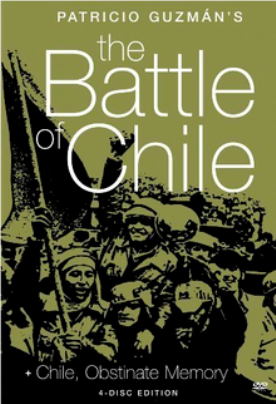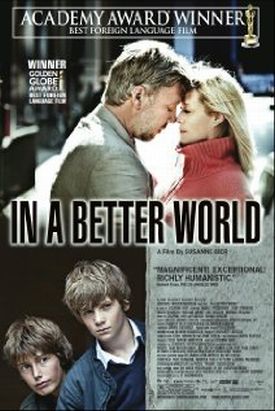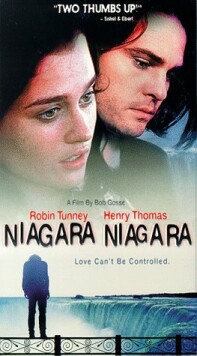Chile: Obstinate Memory and Battle of Chile Part 2: The Coup
I went out of curiosity to the interesting documentary double billing of Chile, Obstinate Memory and The Battle of Chile Part Two: The Coup d’Etat by Patricio Guzman. The second was the 90-minute central episode extracted from Guzman’s three-part Marxist epic of 1978 and shown first; the first, shown second, was the hour long postscript that he made only last year, on return to a Chile where it was again possible to talk openly about the military coup of 1973 in which Salvador Allende, Chile’s elected communist president, was overthrown by General Augusto Pinochet and other leaders of the Chilean armed forces. The generals said Allende killed himself; Guzman says he was “killed in combat”
Now Pinochet has at last stepped down from the presidency, having brought to his country peace, the most prosperous economy in Latin America and, finally, a restoration of democracy. In the meantime, the Communist dream for which Allende stood has collapsed. It is in ruins everywhere in the world except among the idle, subsidized intellectual classes supported by the universities and foundations of the wealthy West. Would this seemingly essential datum have managed to impress itself, even in the smallest degree on Señor Guzman, I wondered? American Spectator readers will not be too surprised, I fancy, to learn that the answer is no. “Obstinate” memory is certainly the right word here. Not only Guzman but everybody who makes an appearance in his film and, seemingly, everybody in the small audience who saw it with me, has willingly embraced ideological fossilization. There they are, continuing to spout their Marxist gibberish in defiance of all experience. It would be rather splendid if it were not so boring.
For example, the voiceover narration of the black and white Battle of Chile goes like this: “The imperialists and bourgeoisie decide on a coup [in June]
but they are not supported by the rest of the armed forces. The bourgeoisie has blundered. . .The fascist tanks begin to withdraw. . . The workers pour into downtown Santiago to show their support for the Allende government. . . But President Allende’s request [for martial law] is not approved by the so called ‘democratic’ sectors of the opposition. . .President Allende makes every effort. . .to avoid extraconstitutional action. . .but the fascist violence claims an officer close to the President. . .The class nature of the state repressive apparatus becomes apparent and the rest of the officers side with fascism. . . Fascist groups trained by US intelligence services organize the [transport] strike. . .This is a purely political strike. If the trucks were running there wouldn’t be any queues. . .On August 27, the bourgeoisie as a whole breaks with the constitutional regime. . .Three years of economic warfare have enabled imperialism and the bourgeoisie to win over important segments of the middle class.”
Blah, blah, blah. Imagine an hour and a half of that nonsense and you have some idea of what boredom can be. You’d think that at least there would be some striking pictures of the fighting. Or perhaps just the strikes. But there are very few. Most of the images are of talking heads—attractive ones jabbering in Marx-speak and unattractive ones trying vainly (of course) to parry their arguments. Apart from those of the Chilean Air Force jet strafing La Moneda palace, almost the only memorable images I retained after the sad story had been told was one of a government spokesman earnestly speaking against the coup under a poster that read “Viva Chile, Viva Cuba” (coups obviously being an entirely different matter in Cuba!) and another of a crowd of mindless slogan chanters marching past a cinema marquee in downtown Santiago where, briefly, one could make out the words: “Peter O’Toole” and “Petula Clark” and “Adios Mr Chips.”
In the coup of September 11, as the sexless female narrator bitterly informs us, “the US Army acts in an advisory capacity.” But her consolation must be that “the junta fails in its aim to destroy the revolutionary awareness of the people.” In order to demonstrate this highly dubious proposition, we return to a peaceful Chile nearly a quarter century later and watch, in color, and listen, as Guzman interviews probably all the people left in Chile who pine for the lost leader. And nobody else. One hilariously mixed up young woman turns to the camera, full of emotion, and tells us “I was wrong.” Hard as it is to admit her mistake, she says, she now must do so: she had welcomed the Pinochet coup as a restoration of order but now (in ordered, prosperous, democratic Chile) she can see how wrong she’d been.
Almost the only other moment lightening the oppressive gloom of self-deception comes as one rather proud and patriotic young man opines that the CIA could not have been involved in the coup because it was perfectly designed and executed and was carried out without a hitch. He was also proud of the fact that the number of victims, including “the disappeared” of the anti-Communist repression in Chile, about 2100, was the smallest of any country in Latin America. One supposes he was meant to be discrediting himself with his own words, but for anyone living in the world as it is, it was hard to avoid a comparison with the millions slaughtered by Salvador Allende’s heroes, Lenin, Stalin, Mao, and the thought that Chile had had a comparatively lucky escape.
Discover more from James Bowman
Subscribe to get the latest posts to your email.








